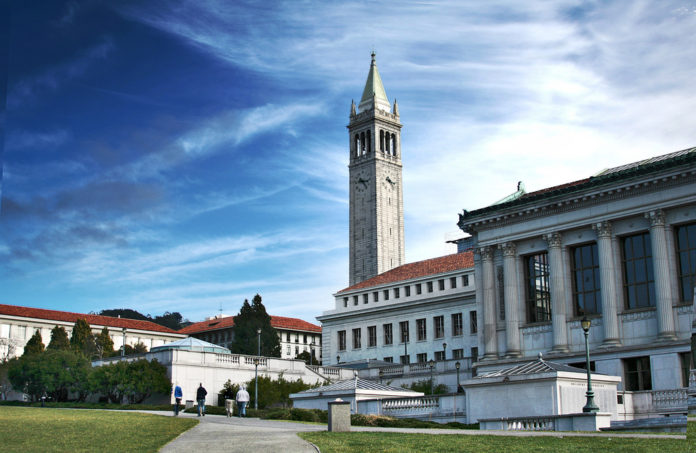
by David Thomas
No-platforming has recently emerged as a vital tactical response to the growing mainstream presence of the self-styled alt-right. Described by proponents as a form of cordon sanitaire, and vilified by opponents as the work of coddled ideologues, no-platforming entails the struggle to prevent political opponents from accessing institutional means of amplifying their views. The tactic has drawn criticism from across the political spectrum. Former US President Barack Obama was himself so disturbed by the phenomenon that during the closing days of his tenure he was moved to remark:
I’ve heard some college campuses where they don’t want to have a guest speaker who is too conservative or they don’t want to read a book if it has language that is offensive to African-Americans or somehow sends a demeaning signal towards women. …I gotta tell you I don’t agree with that either. I don’t agree that you, when you become students at colleges, have to be coddled and protected from different points of view…Sometimes I realized maybe I’ve been too narrow-minded, maybe I didn’t take this into account, maybe I should see this person’s perspective. …That’s what college, in part, is all about…You shouldn’t silence them by saying, “You can’t come because I’m too sensitive to hear what you have to say” … That’s not the way we learn either. (qtd. Kingkade 2017 [2015])
Obama’s words here nicely crystalize one traditional understanding of the social utility of free speech. In classical liberal thought, free speech is positioned as the cornerstone of a utilitarian account of political and technological progress, one that views the combat of intellectually dexterous elites as the crucible of social progress. The free expression of informed elite opinion is imagined as an indispensable catalyst to modernity’s ever-accelerating development of new knowledge. The clash of unfettered intellects is said to serve as the engine of history.
For John Stuart Mill, one of the first to formulate this particular approach to the virtues of free expression, the collision of contrary views was necessary to establish any truth. Mill explicitly derived his concept of the truth-producing “free market of ideas” from Adam Smith’s understanding of how markets work. In both cases, moderns were counselled to entrust themselves to the discretion of a judicious social order, one that was said to emerge spontaneously as rational individuals exerted their vying bids for self-expression and self-actualization. These laissez faire arguments insisted that an optimal ordering of ends and means would ultimately be produced out of the mass of autonomous individual initiatives, one that would have been impossible to orchestrate from the vantage point of any one individual or group. In both cases – free speech and free markets – it was said that if we committed to the lawful exercise of individual freedoms we could be sure that the invisible hand will take care of the rest, sorting the wheat from the chaff, sifting and organizing initiatives according to the outcomes that best befit the social whole, securing our steady collective progress toward the best of all possible worlds. No surprise, then, that so much worried commentary on the rise of the alt-right has cautioned us to abide by the established rules, insisting that exposure to the free speech collider chamber will wear the “rough edges” off the worst ideas, allowing their latent kernels of rational truth to be developed and revealed, whilst permitting what is noxious and unsupportable to be displayed and refuted.
A key point, then, about no-platforming is that its practice cuts against the grain of this vision of history and against the theory of knowledge on which it is founded. For in contrast to proponents of Mill’s proceduralist epistemology, student practioners of no-platforming have appropriated to themselves the power to directly intervene in the knowledge factories where they live and work, “affirmatively sabotaging” (Spivak 2014) the alt-right’s strategic attempts to build out its political legitimacy. And it is this use of direct action, and the site-specific rejection of Mill’s model of rational debate that it has entailed, that has brought student activists to the attention of university administrators, state leaders, and law enforcement.
We should not mistake the fact that these students have been made the object of ire precisely because of their performative unruliness, because of their lack of willingness to defer to the state’s authority to decide what constitutes acceptable speech. One thing often left unnoticed in celebrations of the freedoms afforded by liberal democracies is the role that the state plays in conditioning the specific kinds of autonomy that individuals are permitted to exercise. In other words, our autonomy to express opposition as we see fit is already much more intensively circumscribed than recent “free speech” advocates care to admit.
Representations of no-platforming in the media bring us to the heart of the matter here. Time and again, in critical commentary on the practice, the figure of the wild mob resurfaces, often counter-posed to the disciplined, individuated dignity of the accomplished orator:
[Person X] believes that he has an obligation to listen to the views of the students, to reflect upon them, and to either respond that he is persuaded or to articulate why he has a different view. Put another way, he believes that one respects students by engaging them in earnest dialogue. But many of the students believe that his responsibility is to hear their demands for an apology and to issue it. They see anything short of a confession of wrongdoing as unacceptable. In their view, one respects students by validating their subjective feelings. Notice that the student position allows no room for civil disagreement. Given this set of assumptions, perhaps it is no surprise that the students behave like bullies even as they see themselves as victims. (Friedersdorf 2015)
These remarks are exemplary of a certain elective affinity for a particular model citizen – a purportedly non-bullying parliamentarian agent or eloquent spokesperson who is able to establish an argument’s legitimacy with calm rationality. These lofty incarnations of “rational discourse” are routinely positioned as the preferred road to legitimate political influence. Although some concessions are made to the idea of “peaceful protest,” in the present climate even minimal appeals to the politics of collective resistance find themselves under administrative review (RT 2017). Meanwhile, champions of free speech quietly endorse specific kinds of expression. Some tones of voice, some placard messages, some placements of words and bodies are celebrated; others are reviled. In practice, the promotion of ostensibly “free” speech often just serves to idealize and define the parameters of acceptable public conduct.
No-platforming pushes back against these regulatory mechanisms. In keeping with longstanding tactics of subaltern struggle, its practice demonstrates that politics can be waged through a diversity of means, showing that alongside the individual and discursive propagation of one’s political views, communities can also act as collective agents, using their bodies and their capacity for self-organization to thwart the rise of political entities that threaten their wellbeing and survival. Those conversant with the history of workers’ movements will of course recognize the salience of such tactics. For they lie at the heart of emancipatory class politics, in the core realization that in standing together in defiance of state violence and centralized authority, disenfranchised communities can find ways to intervene in the unfolding of their fates, as they draw together in the unsanctioned shaping and shielding of their worlds.
It is telling that so much media reportage seems unable to identify with this history, greeting the renewed rise of collective student resistance with a combination of bafflement and recoil. The undercurrent of pearl-clutching disquiet that runs through such commentary might also be said to perform a subtle kind of rhetorical work, perhaps even priming readers to anticipate and accept the moment when police violence will be deployed to restore “order,” to break up the “mob,” and force individuals back onto the tracks that the state has ordained.
Yet this is not to say there is nothing new about this new wave of free speech struggles. Instead, they supply further evidence that longstanding strategies of collective resistance are being displaced out of the factory systems – where we still tend to look from them – and into what Joshua Clover refers to, following Marx, as the sphere of circulation, into the marketplaces and the public squares where commodities and opinions circulate in search of valorization and validation. Disenfranchised communities are adjusting to the debilitating political legacies of deindustrialization. As waves of automation have rendered workers unable to express their resistance through the slowdown or sabotage of the means of production, the obstinacy of the strike has been stripped down to its core. And as collective resistance to the centralized administration of social conduct now plays out beyond the factory’s walls, it increasingly takes on the character of public confrontation with the state. Iterations of this phenomenon play out in flashpoints as remote and diverse as Berkeley, Ferguson, and Standing Rock. And as new confrontations fall harder on the heels of the old, they make a spectacle of the deteriorating condition of the social contract.
If it seems odd to compare the actions of students at elite US universities and workers in the industrial factory systems of old, consider the extent to which students have themselves become increasingly subject to proletarianization and precarity – to indebtedness, to credit wages, and to job prospects that are at best uncertain. This transformation of the university system – from bastion of civil society and inculcator of elite modes of conduct, to frenetic producer of indebted precarious workers – helps to account for the apparent inversion of campus radicalism’s orientation to the institution of free speech.
Longtime observers will recall that the same West Coast campuses that have been key flashpoints in this wave of free speech controversies were once among the most ardent champions of the institution. Strange, then, that in today’s context the heirs to Mario Savio’s calls to anti-racist civil disobedience seem more prone to obstruct than to promote free speech events. Asked about Savio’s likely response to this trend, social scientist and biographer Robert Cohen finds that “Savio would almost certainly have disagreed with the faculty and students who urged the administration to ban Milo Yiannopoulos from speaking on campus, and been heartened by the chancellor’s refusal to ban a speaker” (Cohen 2017). The alt-right has delighted in trolling student radicals over this apparent break with tradition:
Milo Inc.’s first event will be a return to the town that erupted in riots when he was invited to speak earlier this year. In fact, Yiannopoulos said that he is planning a “week-long celebration of free speech” near U.C. Berkeley, where a speech by his fellow campus agitator, Ann Coulter, was recently canceled after threats of violence. It will culminate in his bestowing something called the Mario Savio Award for Free Speech. (The son of Savio, one of the leaders of Berkeley’s Free Speech movement during the mid-1960s, called the award “some kind of sick joke”.) (Nguyen 2017)
Yet had Milo named his free speech prize after Savio’s would-be mentor John Searle, then the logic of current events might have appeared a little more legible. For as Lisa Hofmann-Kuroda and Beezer de Martelly have recently reminded us, in the period between 1965 and 1967 when the Free Speech Movement (FSM) was emerging as the home of more militant forms of student resistance, the US government commission Searle to research the movement. The resulting publication would eventually come to serve “as a manual for university administrators on how to most efficiently dismantle radical student protests” (Hofmann-Kuroda and de Martelly 2017). One of the keys to Searle’s method was the effort to “encouraged students to focus on their own … abstract rights to free speech,” a move that was to “shift campus momentum away from Black labor struggles and toward forming a coalition between conservatives and liberals on the shared topic of free speech rights” (Hofmann-Kuroda and de Martelly 2017). Summing up the legacies of this history from today’s vantage, Hofmann-Kuroda and de Martelly remark:
In hindsight, it becomes clear that the “alt-right”‘s current use of the free speech framework as a cover for the spread of genocidal politics is actually a logical extension of the FSM — not, as some leftists would have it, a co-optation of its originally “radical” intentions. In addition to the increasingly violent “free speech rallies” organized in what “alt-right” members have dubbed “The Battle for Berkeley,” the use of free speech as a legitimating platform for white supremacist politics has begun to spread throughout the country. (Hofmann-Kuroda and de Martelly 2017)
It is in relation to this institutional history that we might best interpret the alt-right’s use of free speech and the responses of the student left. For as Hofmann-Kuroda and de Martelly suggest, the alt-right’s key avatars such as Milo and Richard Spenser have now succeeded in building out the reach of Searle’s tactics. Their ambitions have extended beyond defusing social antagonisms and shoring up the prevailing status quo; indeed, in an eerie echo of Savio’s hopes for free speech, the alt-right now sees the institution as a site where dramatic social transformations can be triggered.
But why then is the alt-right apt to see opportunities in this foundational liberal democratic institution, while the student left is proving more prone to sabotage its smooth functioning? It certainly appears that Searle’s efforts to decouple free speech discourse and anti-racist struggle have been successful. Yet to grasp the overall stakes of these struggles it can be helpful to pull back from the abstract debates that Searle proved so adept in promoting, to make a broader assessment of prevailing socio-economic and climatic conditions.
For in mapping how the terrain has changed since the time of Salvo and Searle we might take account of the extent to which the universal summons to upward mobility, and the global promise of endless material and technological enfranchisement that defined the social experience of postwar modernization, have lately begun to ring rather hollow. Indeed as we close in on the third decade of the new millennium, there seems to be no end to the world system’s economic woes in sight, and no beginning to its substantive reckoning with problem of anthropogenic climate change.
In response, people are changing the way they orient themselves toward the centrist state. In another instance of his welcome and ongoing leftward drift, Bruno Latour argues that global politics are now defined by the blowback of a catastrophically failed modernization project:
The thing we share with these migrating peoples is that we are all deprived of land. We, the old Europeans, are deprived because there is no planet for globalization and we must now change the entire way we live; they, the future Europeans, are deprived because they have had to leave their old, devastated lands and will need to learn to change the entire way they live.
This is the new universe. The only alternative is to pretend that nothing has changed, to withdraw behind a wall, and to continue to promote, with eyes wide open, the dream of the “American way of life,” all the while knowing that billions of human beings will never benefit from it. (Latour 2017)
Apprehending the full ramifications of the failure of modernization will require us to undertake what the Club of Rome once referred to as a “Copernican revolution of the mind” (Club of Rome 1972: 196). And in many respects the alt-right has been quicker to begin this revolution than the technocratic guardians of the globalist order. In fact, it seems evident that the ethnonationalists look onto the same prospects as Latour, while proscribing precisely the opposite remedies. Meantime, guardians of the “center” remain all too content to repeat platitudinous echoes of Mills’ proceduralism, assuring us all that – evidence to the contrary – the market has the situation in invisible hand.
This larger historical frame is key to understanding campus radicalism’s turn to no-platforming, which seems to register – on the level of praxis – that the far right has capitalized far more rapidly on emergent conditions that the center or the left. In understanding why this has occurred, it is worth considering the relationship between the goals of the FSM and the socioeconomic conditions that prevailed in the late 1960s and early 1970s when the movement was at its peak.
For Savio and his anti-racist allies at the FSM, free speech afforded radicals both a platform from to which protest US imperialism with relative impunity, and an institutional lodestar by which to steer a course that veered away from the purges and paranoia of the Stalinist culture of command. It seemed that the institution itself served as a harbinger of a radicalized and “socialized” state, one that was capable of executing modernization initiatives that would benefit everyone.
The postwar program of universal uplift then seemed apt to roll out over the entire planet, transforming the earth’s surface into a patchwork of independent modern nation states all locked into the same experience of ongoing social and technological enfranchisement. In such a context Savio and other contemporary advocates of free-speech saw the institution as a foreshadowing of the modern civil society into which all would eventually be welcomed as enfranchised bearers of rights. Student activism’s commitment to free speech thus typified the kind of statist radicalism that prevailed in the age of decolonization, a historical period when the postcolonial state seemed poised to socialize wealth, and when the prospect of postcolonial self-determination was apt to be all but synonymous with national modernization programs.
Yet in contrast to this expansive and incorporative modernizing ethos, the alt-right savior state is instead being modeled around avowedly expulsive and exclusionary initiatives. This is the state reimagined as a gated community writ large, one braced – with its walls, border camps, and guards – to resist the incursion of “alien” others, all fleeing the catastrophic effects of a failed postwar modernization project. While siphoning off natural wealth to the benefit of the enwalled few, this project has unleashed the ravages of climate change and the impassive violence of the border on the exposed many. The alt-right response to this situation is surprisingly consonant with the Pentagon’s current assessment, wherein the US military is marketed as a SWAT team serving at the dispensation of an urban super elite:
Given the lines along which military and official state policy now trends, it is probably a mistake to characterize far-right policy proposals as a wholescale departure from prevailing norms. Indeed, it seems quite evident that – as Latour remarks – the “enlightened elite” have known for some time that the advent of climate change has given the lie to the longstanding promises of the postwar reconstruction:
The enlightened elites soon started to pile up evidence suggesting that this state of affairs wasn’t going to last. But even once elites understood that the warning was accurate, they did not deduce from this undeniable truth that they would have to pay dearly.
Instead they drew two conclusions, both of which have now led to the election of a lord of misrule to the White House: Yes, this catastrophe needs to be paid for at a high price, but it’s the others who will pay, not us; we will continue to deny this undeniable truth. (Latour 2017)
From such vantages it can be hard to determine to what extent centrist policies actually diverge from those of the alt-right. For while they doggedly police the exercise of free expression, representatives of centrist orthodoxy often seem markedly less concerned with securing vulnerable peoples against exposure to the worst effects of climate change and de-development. In fact, it seems all too evident that the centrist establishment will more readily defend people’s right to describe the catastrophe in language of their own choosing than work to provide them with viable escape routes and life lines.
Contemporary free speech struggles are ultimately conflicts over policy rather than ironic contests over theories of truth. For it has been in the guise of free speech advocacy that the alt-right has made the bulk of its initial gains, promoting its genocidal vision through the disguise of ironic positional play, a “do it for the lolz” mode of summons that marshals the troops with a nod and wink. It seems that in extending the logic of Searle’s work at Berkley, the alt-right has thus managed to “hack” the institution of free speech, navigating it with such a deft touch that defenses of the institution are becoming increasingly synonymous with the mainstream legitimation of their political project.

Is it then so surprising that factions of the radical left are returning full circle to the foundationally anti-statist modes of collective resistance that defined radical politics at its inception? Here, Walter Benjamin’s concept of “the emergency brake” suggests itself, though we can adjust the metaphor a little to better grasp current conditions (Benjamin 2003: 401). For it is almost as if the student left has responded to a sense that the wheel of history had taken a sickening lurch rightward, by shaking free of paralysis, by grabbing hold of the spokes and pushing back, greeting the overawing complexities of our geopolitical moment with local acts of defiance. It is in this defiant spirit that we might approach the free speech debates, arguing not for the implementation of draconian censorship mechanisms (if there must be a state, better that it is at least nominally committed to freedom of expression than not) but against docile submission to a violent social order—an order with which adherence to the doctrine of free speech is perfectly compatible. The central lesson that we might thus draw from the activities of Berkley’s unruly students is that the time for compliant faith in the wisdom of our “guardians” is behind us (Stengers 2015: 30).
David Thomas is a Joseph-Armand Bombardier Canada Graduate Scholar in the Department of English at Carleton University. His thesis explores narrative culture in post-workerist Britain, and unfolds around the twin foci of class and climate change.
Bibliography
Benjamin, Walter. 2003. Selected Writings Volume 4: 1938 – 1940. Cambridge: Harvard University Press.
Clover, Joshua. 2016. Riot. Strike. Riot. London: Verso.
Cohen, Robert. 2017. “What Might Mario Savio Have Said About the Milo Protest at Berkeley?” Nation, February 7. www.thenation.com/article/what-might-mario-savio-have-said-about-the-milo-protest-at-berkeley/
Friedersdorf, Conor. 2015. “The New Intolerance of Student Activism.” Atlantic, November 9. www.theatlantic.com/politics/archive/2015/11/the-new-intolerance-of-student-activism-at-yale/414810/
Hofmann-Kuroda, Lisa, and Beezer de Martelly. 2017. “The Home of Free Speech™: A Critical Perspective on UC Berkeley’s Coalition With the Far-Right.” Truth Out, May 17. www.truth-out.org/news/item/40608-the-home-of-free-speech-a-critical-perspective-on-uc-berkeley-s-coalition-with-the-far-right
Kingkade, Tyler. 2015. “Obama Thinks Students Should Stop Stifling Debate On Campus.” Huffington Post, September 9. [Updated February 2, 2017]: www.huffingtonpost .com/entry/obama-college-political-correctness_us_55f8431ee4b00e2cd5e80198
Latour, Bruno. 2017. “The New Climate.” Harpers, May. harpers.org/archive/2017/05/the-new-climate/
“Right to Protest?: GOP State Lawmakers Push Back Against Public Dissent.” 2017. RT, February 4. www.rt.com/usa/376268-republicans-seek-outlaw-protest/
Nguyen, Tina. 2017. “Milo Yiannopoulos Is Starting a New, Ugly, For-Profit Troll Circus.” Vanity Fair, April 28. www.vanityfair.com/news/2017/04/milo-yiannopoulos-new-media-venture
Spivak, Gayatri. 2014. “Herald Exclusive: In conversation with Gayatri Spivak,” by Nazish Brohiup. Dawn, Dec 23. www.dawn.com/news/1152482
Stengers, Isabelle. 2015. In Catastrophic Times: Resisting the Coming Barbarism. Open Humanities Press. openhumanitiespress.org/books/download/Stengers 2015 In Catastrophic-Times.pdf



